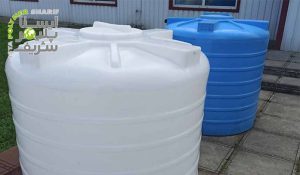FRP water tanks or fiberglass reinforced polyesters or GRP tanks (GRP tanks) or fiberglass reinforced plastics, are among the modern composite materials used to construct equipment for petrochemical plant buildings such as tanks or pressure vessels. FRP refers to composite materials that contain very different compounds compared to other fluid storage tanks. Given that FRP tanks have high corrosion resistance, in some cases they are used as a resistant layer against infiltration and as a laminated structure.
Use of FRP or GRP Tanks for Drinking Water
FRP tanks or GRP tanks (GRP tanks) are essential in some industries. The use of FRP tanks or GRP tanks in water, wastewater, chemical, and gas industries is common due to their low weight, very high mechanical properties, and long lifespan. In addition to the above, GRP composite tanks, due to their high chemical resistance, are the best replacement for metals in many industries such as tank construction, pipe manufacturing, and reactor tanks.
FRP tanks can be designed and manufactured in various sizes, shapes, and volumes. GRP tanks have a density that is a quarter of iron. This means that composite tanks can be moved by hand in many cases. GRP tanks or FRP tanks are easy to repair and do not require arc welding in specific cases. Engineering composites have properties and volumes that many metal tanks cannot achieve.
FRP Tank Price
The price of FRP tanks is lower compared to stainless steel tanks or alloy tanks with a high percentage of nickel and titanium. FRP tanks have a low density and a high strength-to-weight ratio. This makes FRP tanks very attractive for transportation. These tanks are known as modular tanks or SMC tanks in prefabricated models. Modular water tanks or modular storage tanks or SMC tanks can be constructed in various volumes and shapes. In addition to high thermal resistance, FRP composite tanks are very good thermal and electrical insulators. FRP or GRP tanks can also store aliphatic hydrocarbons and oil.






